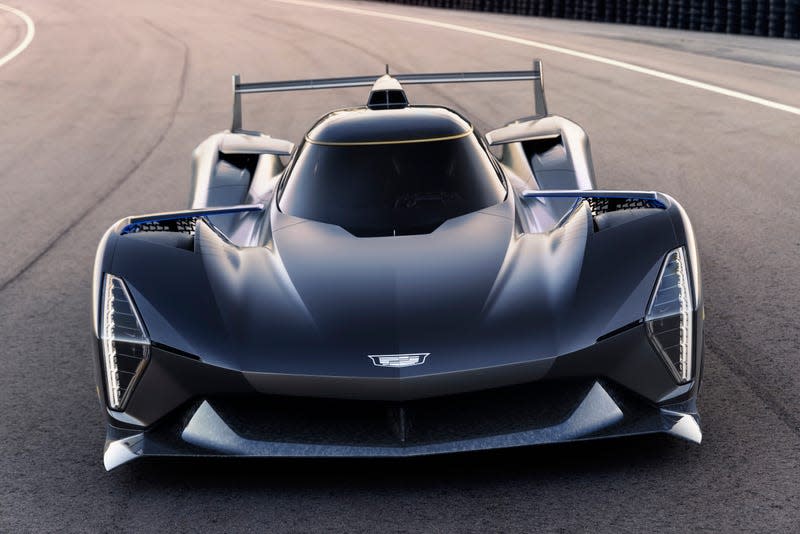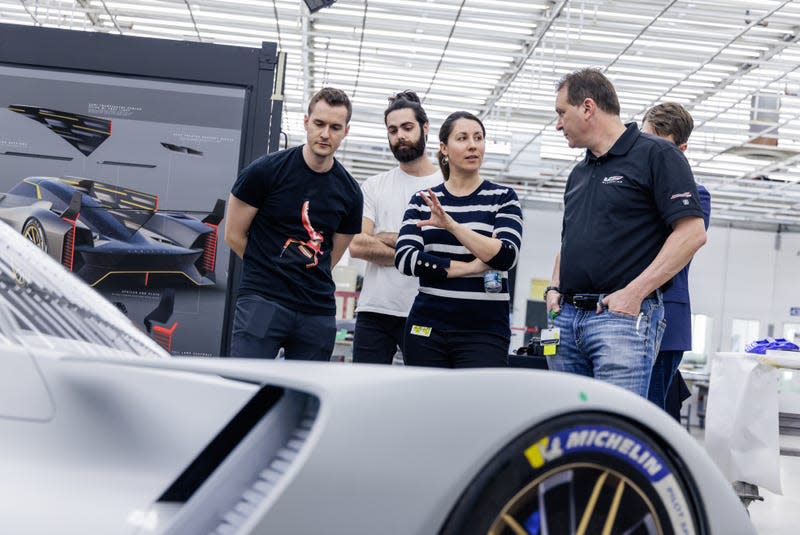How a Cadillac Design Study Became a GTP Race Car
Cadillac’s V-Series.R car was born as a design exercise. Near the start of the COVID-19 pandemic, the luxury brand’s design team was looking at its future in racing. Designed through the lockdowns, across countries and oceans, remotely, involving several teams of designers and engineers, the final product was revealed in fighting form, landing a podium spot in the inaugural GTP race at IMSA’s 2023 Rolex 24 at Daytona.
Putting Pen to Paper: A Cadillac Design Study

When Cadillac designers first started sketching, no automaker had committed to the new International Motor Sports Association (IMSA) and World Endurance Championship (WEC) hypercar category that would soon replace the old Daytona Prototype International race cars. Instead, designers at General Motors’ Warren Tech Center in Michigan were looking to create something that would reflect Cadillac’s updated image and future styling.
Read more
“This car has lived and died many, many times,” Chris Mikalauskas, lead designer for Cadillac’s Exterior Studio, told me. For Mikalauskas, the hypercar concept would be the first race car he ever designed. But he wasn’t unfamiliar with the Cadillac brand: Mikalauskas worked on the CT4-V Blackwing and CT5-V Blackwing.

Mikalauskas says Cadillac’s intent was to explore a next-generation design for its racer. “A lot of the work we were doing was more just ethereal and visionary,” he told me in a video chat after the 2023 Rolex 24 at Daytona. The car that competed at Daytona originated as something designers would just love to look at in the office – the car you would walk past and turn around to catch one last glimpse. Mikalauskas looked to Cadillac’s golden anniversary and post-war designs for inspiration. Cadillac’s Jet-Age styling referenced aeronautic achievements and futuristic optimism as the world set its sights on the Space Race. Now, Mikalauskas wanted to take that Space Race mentality and bring it into the 21st century.
“I felt like our brand’s DNA has always been about pulling those things into it,” Mikalauskas said. “I really referenced the blades, the float coming off the center, and the strong vertical headlamps and taillamps – the beautiful surfacing and sculpture throughout the car. These are all things that Cadillac has always owned. And really, it was cool to put that in a package that we’ve never really seen before.”
Finding Balance in Design

Cadillac Racing’s initial design reveal, from June 2022.
The V-Series.R project was internally greenlit for competition in February 2021, according to Laura Wontrop Klauser, GM Sports Car Racing Manager. (Cadillac would publicly announce its participation in the new IMSA series in August that year.) From the engineering side, they were “starting from scratch, nothing,” Wontrop Klauser said. On the design side, the transition from styling study to actual race car wasn’t too difficult, because the car was always treated like a Cadillac Studio project, like any other car that would be designed for eventual production. Mikalauskas described engineering meetings, talking about the powertrain and aerodynamics. The most complicated aspect of this project would be getting far-flung teams to work together during a pandemic.
Cadillac’s designers worked out of the GM Tech Center, coordinating with the GM racing program in the States as well as the brand’s chosen chassis partner, Dallara, over in Italy. “We had tracers and clay models here in the studios that we would work on, scan them [...] and pass them back and forth overseas,” Mikalauskas said. Dallara would then do testing and computational fluid dynamics development in Italy. Meanwhile, the bodywork development was handled from Warren, Michigan.

The next task was integrating Cadillac’s design elements into the finished product while paying mind to the specifications set by the Automobile Club de l’Ouest, the officiating body for IMSA and the World Endurance Championship, while also considering functional needs for optimal performance. Mikalauskas had a particularly difficult time with the front end, due to the car needing specific airflow channels for mechanical components. “We were trying to feed air to the splitter, we were trying to feed air to the underwing and the mid-body channels, and also for brake cooling,” he said. “We also had the [air inlet for] the powertrain up over the top of the cockpit. When you have so many things begging for air, and some of them conflict with one another, it’s never easy.”


 Yahoo Autos
Yahoo Autos 